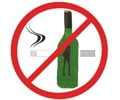A new study has found that both alcohol dependence and conduct disorder contribute to having a high number of sex partners amongst 18-to-25-year-olds.
Researchers at the Washington University School of Medicine have published their findings in the December issue of Alcoholism: Clinical & Experimental Research."Our study is the first of its kind to link problematic drinking and alcohol dependence with a high number of sex partners," said Patricia A. Cavazos-Rehg, research instructor in the Department of Psychiatry at Washington University School of Medicine and corresponding author for the study.
"We have moved beyond self-reports of heavy and/or frequent drinking to utilizing a clinical diagnosis of alcohol dependence in order to improve understanding of how alcohol use influences risky sexual behaviours,” she added.
Denise Hallfors, senior research scientist at the Pacific Institute for Research and Evaluation said: "The relationship between risky sexual behaviour and conduct disorder has been well documented, especially among young women.”
"What was not known was whether alcohol dependence and conduct disorder independently contribute to the number of sexual partners. Previous studies tended to look at either alcohol dependence and conduct disorder, or conduct disorder and sexual risk, or heavy drinking and sexual risk, but not at all three behaviours together,” she added.
Researchers gathered data through personal interviews from 601 unmarried relatives, 18 to 25 years of age, of alcohol-dependent individuals who participated in the Collaborative Study on The Genetics of Alcoholism. Variables examined included: problem drinking, alcohol dependence, conduct problems, conduct disorder, family status, educational attainment, gender, race, age at first intercourse, age at time of interview, and number of sexual partners.
Advertisement
“We also found a risk for high number of sexual partners among persons with conduct disorder independent of level of alcohol involvement. In addition, individuals with co-occurring alcohol dependence and conduct disorder are at even greater risk of multiple sex partnerships,” she added.
Advertisement
Hallfors also suggested two other possibilities for public-health intervention. "Young adults who present in emergency rooms for drinking-related injuries or illnesses could be screened for HIV and STDs. Similarly, a majority of prison inmates have been incarcerated for substance-abuse related crimes, including alcohol problems,” she said.
Cavazos-Rehg said: "At the alcohol-treatment level, clients could be targeted by health professionals to receive education, screening, and treatment for STDs. Furthermore, STD prevention programs and clinics can better understand the role of alcohol dependence and conduct disorder as part of a comprehensive strategy for reducing STD transmission."
Source-ANI
LIN/P











